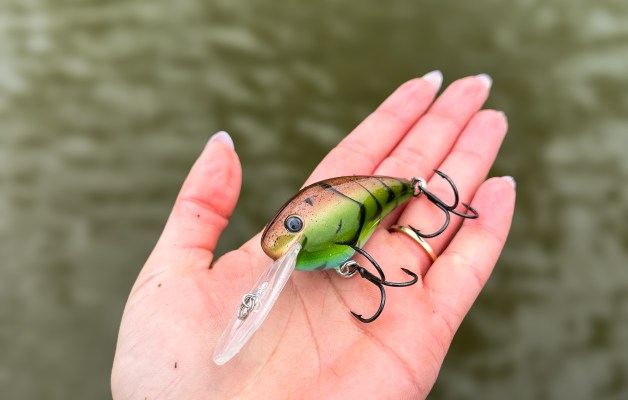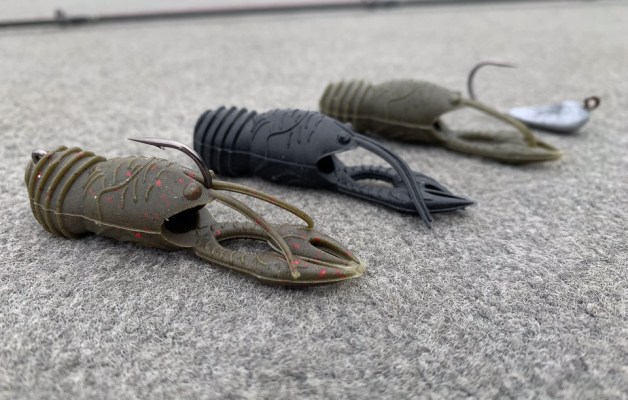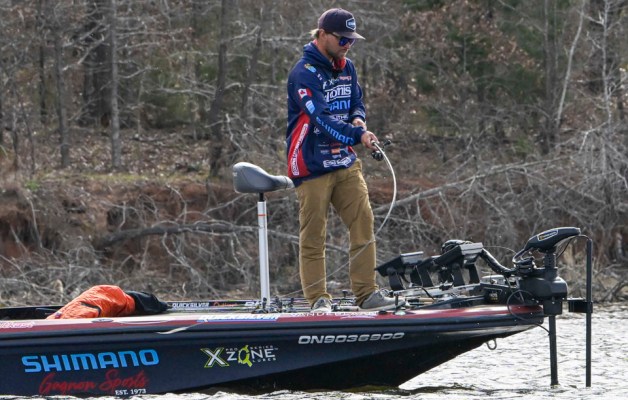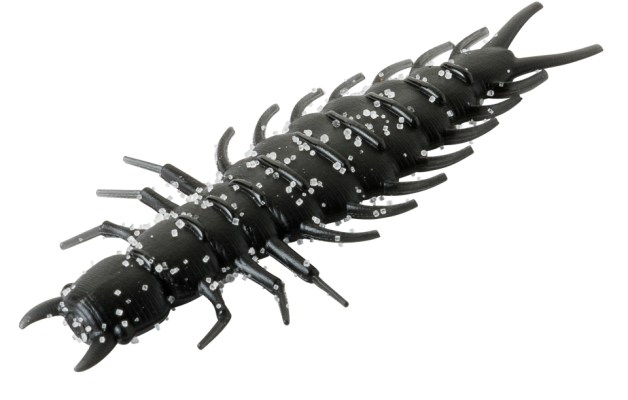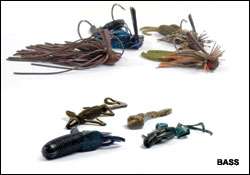
If 2005 was "The Year of the Spinning Rod," it was promptly replaced by the "Big Baits, Big Line" of 2006.
Well, sort of.
One could easily argue that heavy tackle ruled the 11-event Elite Series and three Majors last year. Just look at the baits and techniques that dominated first and second place.
Heavy jigs, 10-inch worms, swimbaits and a few oversized topwaters were key players. Some interesting trends developed as a result.
"Without a doubt, the biggest change was the role that big baits played last season," notes Edwin Evers, who finished eighth overall. "We fished nearly every lake at the best time of year. To be successful, you had to be throwing big baits to catch the quality fish."
Unless, of course, you're Mike Iaconelli, the anomalistic pro who captured his first Angler-of-the-Year title by going against the grain.
"If you took the spinning rod out of my hands last year, I would have finished 20th instead of winning Angler of the Year," says Ike. "I can't tell you how many times finesse fishing bailed me out."
That's not to say Ike didn't subscribe to the big bait/big bass philosophy that carried most pros to high money finishes and berths in the 2007 Bassmaster Classic.
He did.
"But on days when I struggled, I locked the spinning rod in my hand and caught enough fish to climb back into the money," says Ike, who melded power baits with finesse tactics throughout the season.
He says he will again this year, when BASS launches a similar schedule with a few interesting additions. A common denominator, however, will be that pros will face a variety of seasonal patterns on diverse bodies of water.
"The key to this new scheduling format is you have to be versatile and can't fish only your strength and still expect to be a Classic qualifier by the end of the year," offers Ike.
Several lure styles were hurled at bass throughout the season, but none dominated more than the jig. Jigs of some form were a factor in at least six first places and four seconds.
"That doesn't surprise me at all," explains Evers. "It's a bait you have to throw when fishing for big fish. Historically — look at the tournament records over the years — jigs are big-fish baits. And we all figured out that we had to catch better-than-average fish last year to make those cuts."
Californian Skeet Reese says anglers who had confidence in jig fishing did well throughout the season.
"If you can figure out a jig bite, no matter what time of year, you're going to find the caliber of fish it takes to win," he offers.
Jigs were flipped into shallow cover, finessed with soft plastics in clear water, dragged along logs and down steep breaks.
Within those patterns, football heads and compact bodies emerged as the bait of choice for many pros. Much of that had to do with the locations, such as Grand Lake in Oklahoma and Table Rock in Missouri, with their gravel bottoms and deep points.
"The football head is better suited for fishing around logs and rocks because it doesn't roll over on its side like older-style jigs," says Mike McClelland, a jig master who used a 1/2-ounce Jewel Jig to win at Grand.
McClelland says compact jigs with slimmer profiles were in vogue.
"The lakes we fished were predominately clear and pressured," the Oklahoma pro describes. "When you encounter those conditions, you have to trick the bass more. You do that with smaller packages and slower presentations, which is a form of finesse fishing."
Reese agrees. He says that now that the Elite Series includes several summer events and a few on deep, clear lakes, anglers will hear more about football-style jigs.
"The profile of today's 1/2-ounce football jig with a trailer is about 3 to 4 inches," he offers. "A flipping jig of comparable weight is more like 4 to 5 inches. Smaller profiles are going to get more strikes."
Swimbaits
Big-bodied soft plastics that imitate forage and have wiggly tails didn't dominate the trail but they certainly were tied to a number of Elite anglers' rods last season.
"More fish were caught on them than what people were talking about," says McClelland. "Don't be surprised if one produces a big win this year."
And it could happen during the Western Run (Amistad, Delta and Clear lakes), especially at the California lakes where swimbaits got their start.
Reese believes the swimbait trend will continue since manufacturers are coming out with smaller sizes and actions.
"It's the most realistic bait you can throw," he insists. "Davy Hite used a 5-incher (Storm Wildeye) to help him catch some of his fish at Clarks Hill, where he won. I expect one of these lures to be a factor in at least the first three events."
Even Kevin VanDam admits he spent time during the off-season familiarizing himself with Strike King's "King Shad," a hard-body swimbait.
"It's about understanding the lure and gaining enough confidence to use it in nontraditional scenarios," he says. "It gives me another tool when I need to show the fish something different. I hammered smallmouth on it during the fall, and I know it will play a big role this year."
Sight Fishing
The pros believe sight fishing for bedding or cruising bass could factor in the first five events. Targeting bedding bass during springtime is nothing new, but techniques are changing.
Iaconelli, who roomed with Ish Monroe and Fred Roumbanis during the tour, says the two California pros who finished first and second at Amistad taught him a lot.
"Never in a million years did I think you could put a giant tube or a 10-inch worm in a bed and a fish would eat it," he offers. "I've always believed you had to put a tiny tube in there to get them to eat, but that theory went out the window."
Rookie of the Year Steve Kennedy, who also finished second in the Angler-of-the-Year race, credits sight fishing with his success — even though he says he's not good at it.
"We had several tournaments when there were at least some fish hanging around bedding areas," he recalls. "I wasn't sight fishing like some guys."
Kennedy used a one-two punch with a Kinami Flash (stickworm) and a (Reaction Innovations) Sweet Beaver (creature bait) to rake potential areas.
"I'd make long casts to white spots or holes in the grass with the Flash and deadstick it," he describes. "If they didn't pick it up, I'd throw the Beaver in there. It really worked for me and I think it's something not many guys were doing."
The Sweet Beaver, he adds, has a profile like a tube but better resembles bluegill or crawfish raiding the nests. It excels elsewhere, too, he adds, noting that many other anglers were using it in shallow cover.
"I used it nearly every tournament," he offers. "It's a good flipping bait, and one that Tommy Biffle used to win at Oneida."
Trends to Watch
Drop shotting produced the top two finishes at Table Rock last year and was noticeable at other stops during the summer. More importantly, pros have discovered the value of quality electronics in pinpointing — and catching — individual fish while drop shotting deep water. Expect to see more big-screen graphs mounted on the bow of boats when the tour hits summer destinations.
In addition, Berkley's Gulp biodegradable soft baits with built-in fish attractants gained prominence with pros last season.
"It's the real deal for drop shotting," says Ike. "It's such a unique product that it took me a couple of years to realize how good it can be, especially on a drop shot. At Oneida, I was catching 50 to 60 bass a day. It was amazing how they ate it up."
Reese agrees, noting that it's very deadly on smallmouth, and could be a factor at Lake Erie in Buffalo, where a Bassmaster Open was won last season by Ohio pro Joe Balog drop shotting Gulp.
"It's stupid what that stuff does to smallmouth, and when more guys realize it, you're going to see a lot of it in play," he says.
VanDam says baits like swimming frogs and buzzbaits were a factor last season and could be even bigger this spring because of the locations of the -early events.
The weather and seasonal patterns, he advises, will determine which lures and techniques dominate this season.
"Expect the unexpected," VanDam warns. "New patterns and techniques will emerge as they do every year. You have to go into an event with an open mind and fish the conditions and timing you are dealt."


